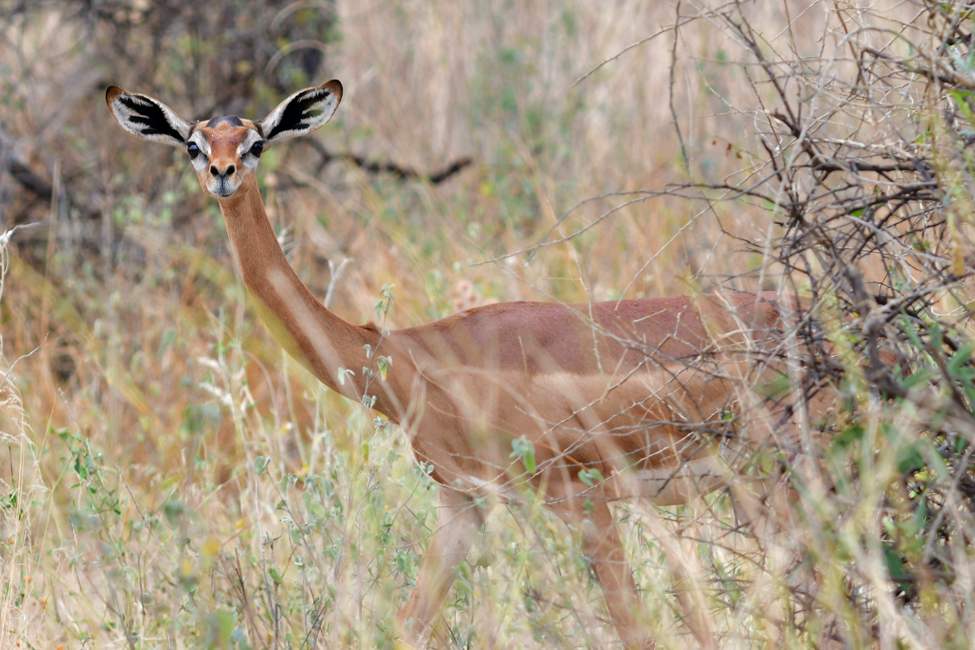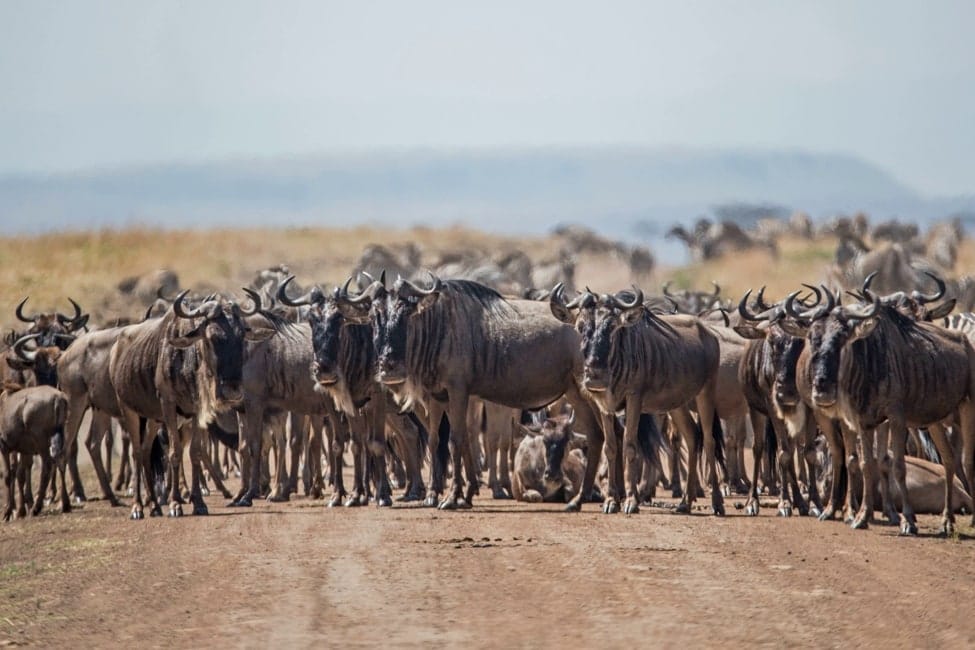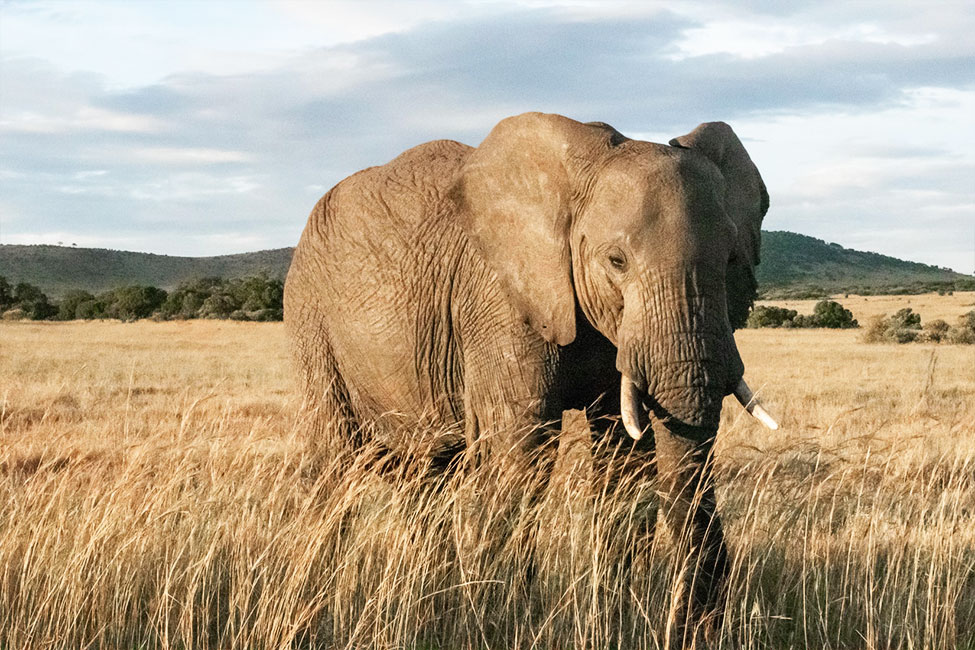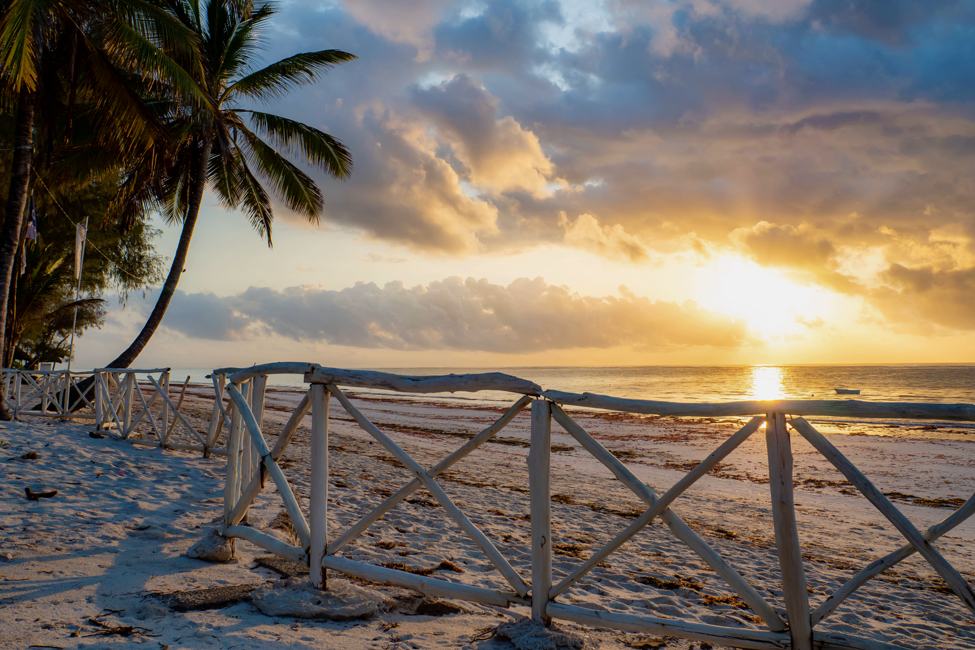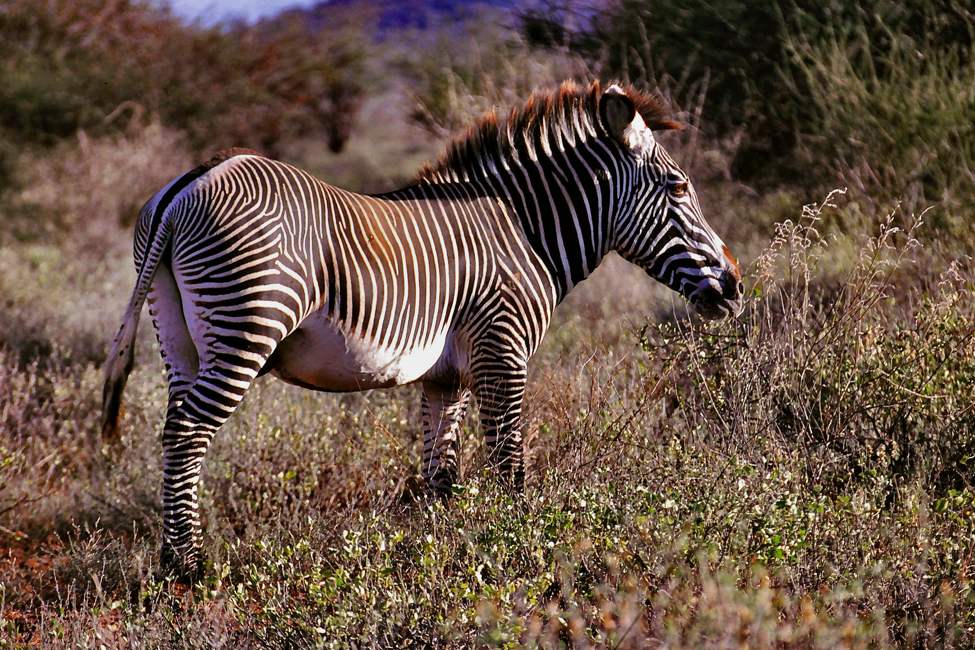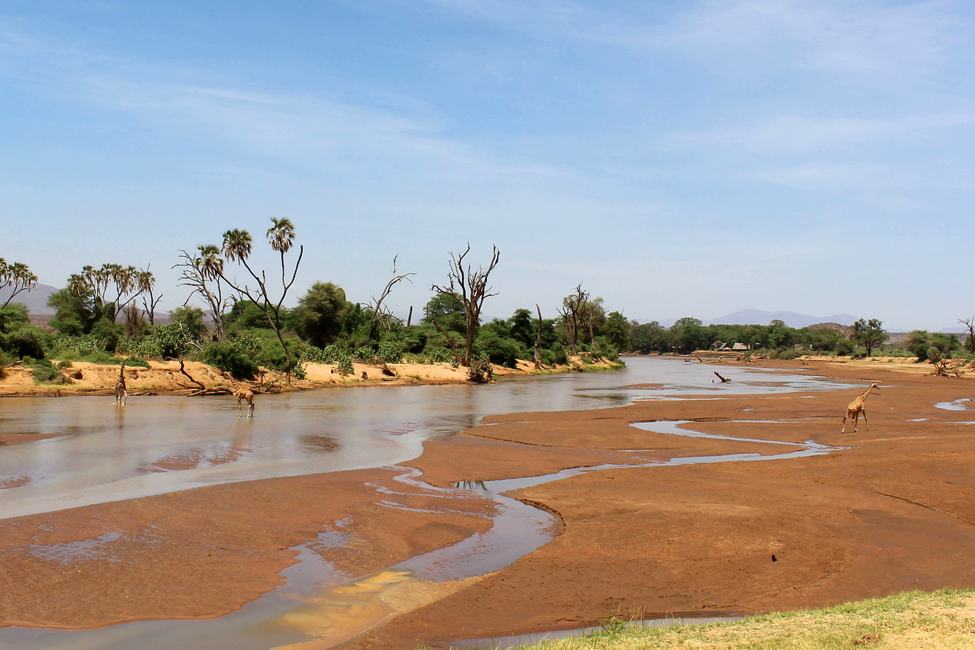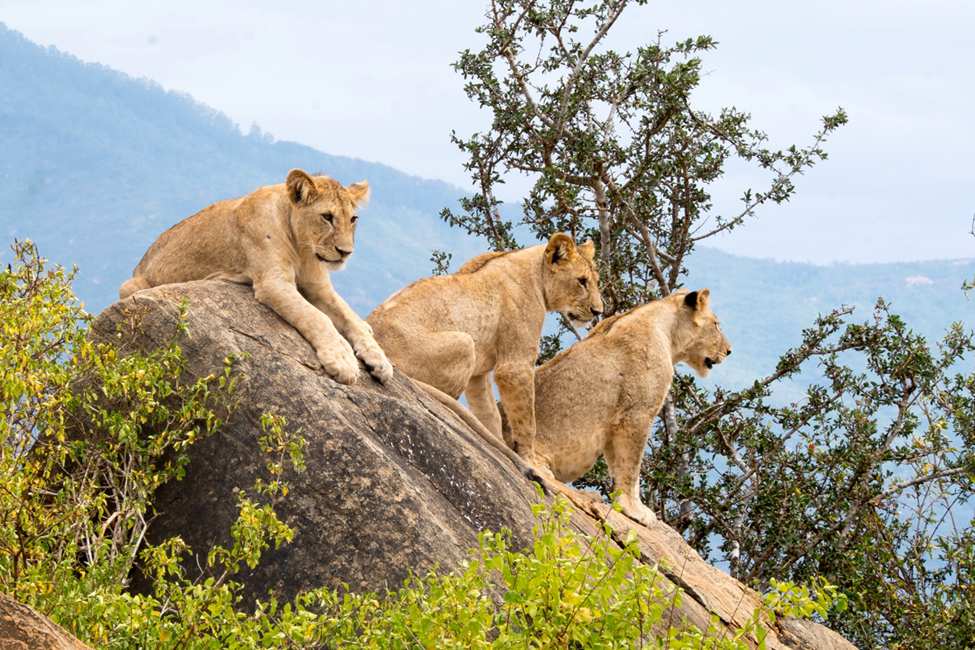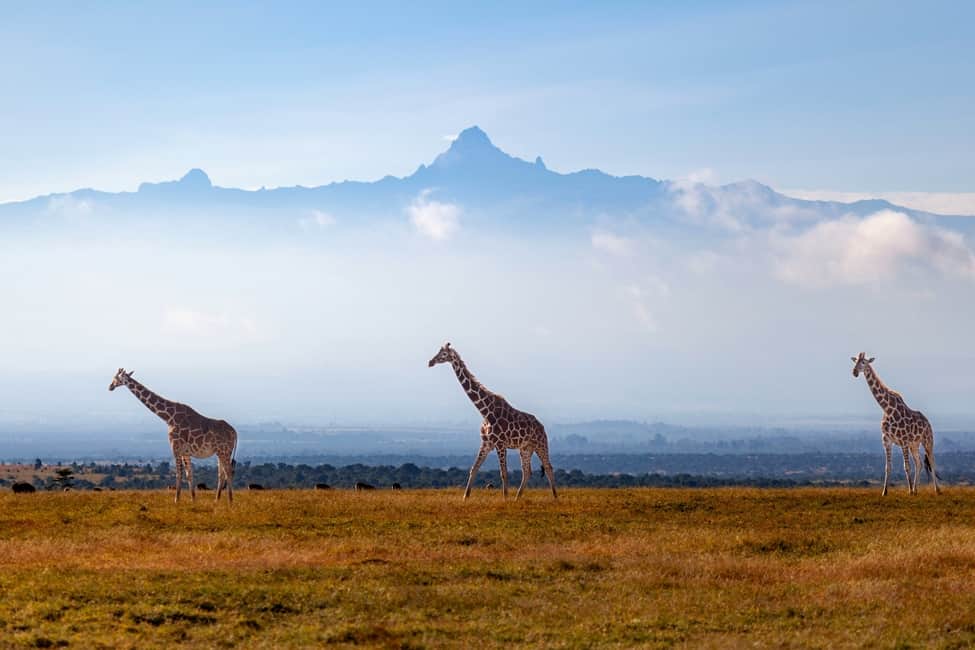Samburu National Reserve: Kenya’s Hidden Gem
With its unique vistas of rugged hills and undulating plains, Samburu National Reserve is where the arid grasslands of northern Kenya meets the live-giving waters of the Ewaso Ng’iro River. The park is home to the famed “Samburu Special Five,” a group of animals that are rarely seen in other parts of Kenya. This includes the world’s largest wild equine, Grevy’s zebra; the Somali ostrich; the reticulated giraffe; the gerenuk antelope with its startlingly long neck; and the beisa oryx (Oryx beisa beisa), more commonly found in Ethiopia and South Sudan. Spotting these unique species adds an extra thrill to any safari adventure.
What to Do in Samburu
Early morning and late afternoon game drives provide the best opportunities to see not just the Samburu Five but also elephants, lions, cheetahs, leopards, hyenas, and a plethora of bird species. The Ewaso Ng’iro River attracts animals year-round, making it a prime location for game viewing. As you explore, you might witness a pride of lions lounging in the shade or a herd of elephants playing in the river. For those seeking adventure beyond game drives, Samburu and its surrounds have much to offer.
Guided nature walks allow you to traverse the park on foot, offering a different perspective on the landscape and its inhabitants. Or navigate the river by canoe or kayak to gain a deeper appreciation of the flora and fauna living in and around it. You can also partake in camel safaris, a traditional mode of transport for the Samburu people, viewing the rugged terrain from a unique perspective.
Speaking of the Samburu people, visiting a nearby village is a great way to learn more about their culture. This ethnic group are cousins of the Maasai who speak a related dialect, and they traditionally raise goats and sheep for their livelihood. Intricate beadwork is a significant aspect of Samburu culture, often used in jewelry and decoration. Each color and pattern has symbolic meaning, representing age, status, and marital status.
Explore Kenya on These Safaris
Staying at Samburu National Reserve
Lodges and tented camps are two great ways to enjoy Samburu National Reserve. We have a special fondness for tented camps, which give you a sense of being right in the thick of the wild without sacrificing comfort. Many are luxury-level, with permanent tents that feature wooden floors, complete bath facilities, and electrical outlets for charging cell phones and camera batteries. You can leave the canvas sides rolled up for fresh air or down for shade and privacy.
From the comfort of your deck, watch elephants bathe on the banks of the Ewaso Ng’iro River. This river connects Samburu to the neighboring Shaba National Reserve, which provides a startling contrast to Samburu with its dry, desert landscape.
Ujuzi works with lodges and camps that are committed to sustainable practices, ensuring that tourism benefits both local communities and the environment. By visiting Samburu, travelers contribute to the preservation of this incredible ecosystem and support initiatives aimed at protecting wildlife.
When and How to Visit Samburu
Samburu is accessible by road or air, and an airstrip is located right within the park. The dry season from June to October is ideal for wildlife viewing, as animals congregate around water sources.
Samburu is a wonderful place to visit for its unique landscape and fascinating diversity of animals. Its beauty is just one part of what makes Kenya so special.
Explore more Kenya parks, or contact Ujuzi to plan your safari!
Sign up for the Ujuzi Newsletter!
From top travel tips to innovative safaris and conservation movement, get inspired to plan your next African safari!
By submitting this form, you are consenting to receive marketing emails from: . You can revoke your consent to receive emails at any time by using the SafeUnsubscribe® link, found at the bottom of every email. Emails are serviced by Constant Contact


